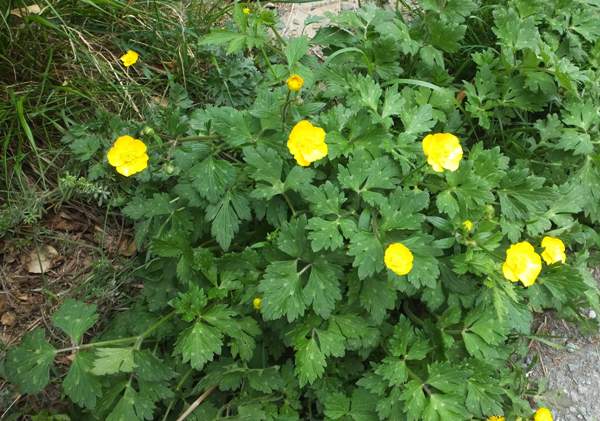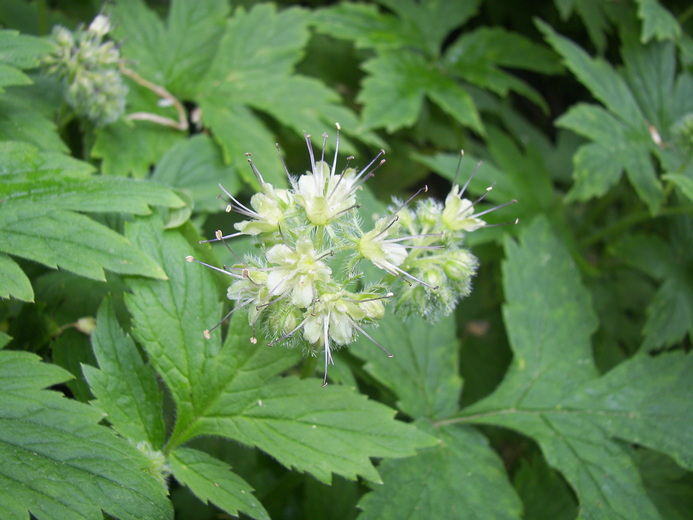Introduced species: Creeping buttercup (Ranunculus repens)
Characteristics: Creeping buttercup is a low-growing, evergreen perennial that thrives in moist or poorly-drained soil. Its hairy leaves are mostly compound, with three leaflets (lobed, often deeply so) on a petiole 4-20 cm (1.5 – 8 in) long; leaves borne on the flower stalk of the plant may be simple and/or sessile. Basal leaflets often feature whitish spots. The showy, yellow flowers are 2-3 cm (an inch, give or take) in diameter, generally with five glossy petals, borne on an erect stalk. The fruits are a cluster of 20-50 small (2.5-4 mm, or about 1/8″) achenes.
Spread: Creeping buttercup can spread both by sexual (seeds) and vegetative (stolons) means. It is very adept at filling in gaps in ground cover; its running stems form roots (or new plants) at each node, allowing it to rapidly insinuate itself into pastures, wet meadows, and open forests. A single plant can cover up to 40 square feet in a year! Buttercup is also poisonous, so this kind of rapid spread is most unwelcome.
Control: Small patches of creeping buttercup can be dug up by hand; be sure to dig deep enough to get all of the filamentous roots. Exposure to the juice/sap can cause a rash in some people, so it’s best to wear gloves when handling creeping buttercup. Mowing is not at all effective, and can spread the plant further if done while the plant is seeding. Larger infestations may need to be treated with an appropriate herbicide.
Native Replacements: Pacific waterleaf (Hydrophyllum tenuipes) is a spreading native plant with attractive, white to pale purple flowers that will do well in moist soils; it’s also one of the few native ground covers that will hold its own against English ivy!


